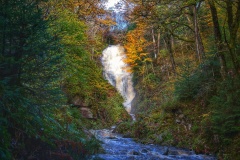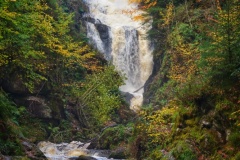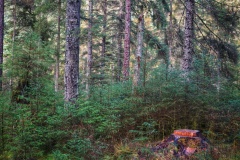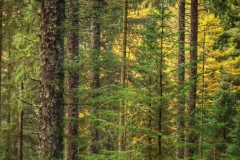GALLERY 16
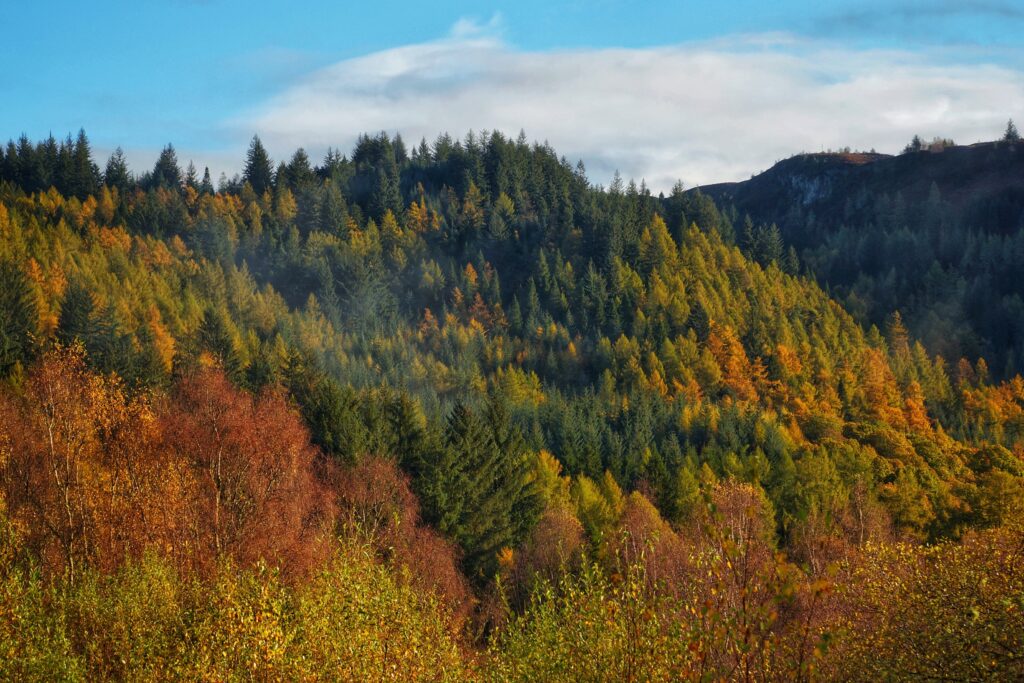
An important research project is based in this forest with significant examples of Continuous Cover Forestry.
Background
Queen Elizabeth Forest Park is a 19,665-hectare (48,590-acre) forest area in the Scottish Highlands which extends from the eastern shores of Loch Lomond to the mountains of Strathyre. The forest park is one of six such parks in Scotland, and was established in 1953, the year of the coronation of Queen Elizabeth II. It is owned and managed by Forestry and Land Scotland.
The Forest Park includes a wide range of habitats and woodland types, ranging from native pinewoods and ancient broadleaf woodlands to productive conifer plantations. Due to its location (within 1 hour drive of both Edinburgh and Glasgow) and the scenic nature of the region, there has been a conscious effort to manage landscapes in a sensitive way and adopt a range of innovative and closer-to-nature forest management approaches, including continuous cover forestry (CCF).
SUPERB “Systemic solutions for upscaling urgent ecosystem restoration for forest-related biodiversity and ecosystem services” is a four-year EU Horizon 2020 project with 36 partners in 16 countries. SUPERB is developing 12 large-scale forest restoration Demonstrations across Europe. The UK Demo site is at Queen Elizabeth Forest Park, and jointly managed by Forestry and Land Scotland, and Forest Research. Restoration actions being demonstrated include transformation to continuous cover forestry, high-elevation forestry, and riparian woodlands that include natural flood management measures. The goal is to link practical and scientific knowledge from the Demo, and enable stakeholders to upscale future forest restoration.
Research in Action
The SUPERB Scotland Demo at Queen Elizabeth Forest focuses on:
- High elevation planting to expand the forest above the current treeline with native broadleaf and montane species to enhance biodiversity and reduce soil loss from erosion and landslides.
- Development of a Natural Flood Management demonstration area, where conifer species are removed from riparian zones, and native broadleaf species are planted and established. Various measures to slow peak steam flow will further reduce risk of flooding to downstream communities.
- Expansion of continuous cover forestry to encourage improved species and structural diversity in forest conifer stands that were originally planted as even-aged clearfell – replant systems. This will encourage biodiversity, improve resilience against a range of climate change risks, and enhance benefits for forest visitors.
Overall, these measures are expected to improve forest resilience to climate risks, reduce flooding in neighbouring communities, reduce soil loss, improve water quality, increase biodiversity and encourage use of the forest by visitors. Restoration within the SUPERB project will be focused using stakeholder workshops and monitored to ensure it meets a wide range of forest management objectives and provides enhanced ecosystem services for stakeholders and local communities.
Further information
- Forestry and Land Scotland: www.forestryandland.gov.scot
- Queen Elizabeth Forest Park (Forestry and Land Scotland): www.forestryandland.gov.scot/visit/forest-parks/queen-elizabeth-forest-park
- Forest Research: www.forestresearch.gov.uk
- Forest Research SUPERB background paper: here
- SUPERB Project: forest-restoration.eu
Site visit: 29 October 2025.
Uploaded: 14 November 2025.
Back to Image Gallery

